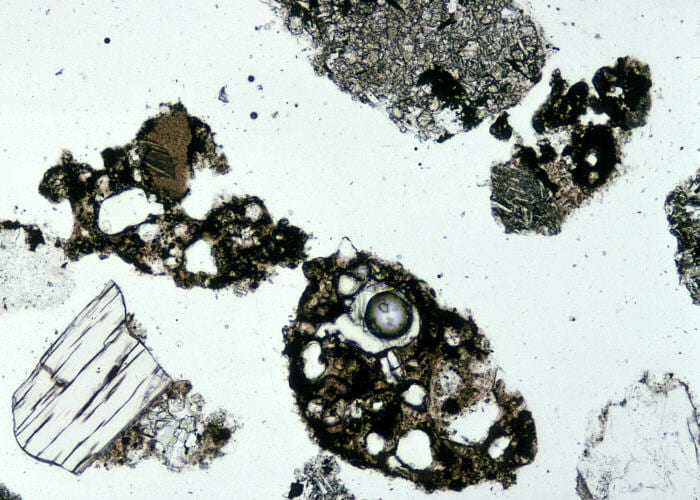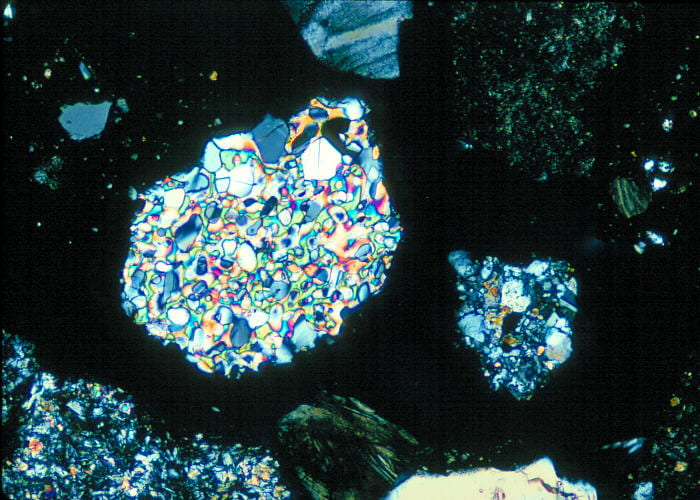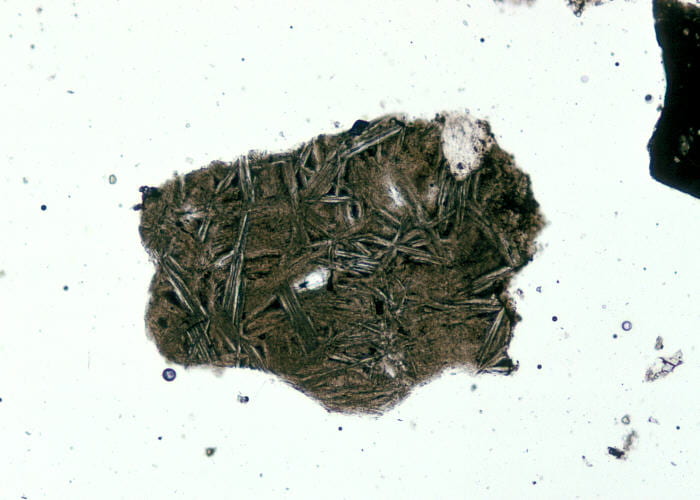Lunar thin section 68501
This mature highlands soil was collected by the Apollo 16 mission to the lunar highlands southwest of Mare Tranquillitatis. The soil was sieved to remove the small size fraction. It is mostly made of feldspathic breccias, agglutinates, feldspar fragments, and occasional mare basalt fragments.
|
Low magnification view of a variety of fragment types. Most of the dark, porous-looking fragments are agglutinates. The dark, homogeneous fragments are glass and partially devitrified glass. A mare basalt pyroxene fragment is in the bottom center, and a mare basalt fragment is in the lower right. There are several feldspathic breccias, which are light-colored with a fragmental texture. The feldspathic breccia fragment in the top center and the lower left fragment are very feldspathic, probably anorthositic. Others, especially the larger one toward the upper left, contain considerable mafic material with relatively low birefringence and are probably norite breccias. Field width is 4 mm. Views in plane- and cross-polarized light. |
|
|
Close-up views of three somewhat foamy, dark agglutinate grains. The grain at the top center appears to be a norite breccia, and the large single crystal at the lower left is a mare basalt pyroxene grain. The agglutinate grains are mostly isotropic glass and opaques (including iron), but contain a variety of mineral and devitrified glass fragments. Field width is 1.6 mm. Views in plane- and cross-polarized light. |
|
|
Another assortment of fragments. The striking fragment just to the left of center appears to be an impact melt breccia with poikilitic clinopyroxene. The colorless grain at the top center is a shocked plagioclase, an agglutinate is at the top left and probably top right. A partially devitrified glass fragment is at the bottom center, and partially annealed noritic breccias are at the bottom left and also just below and to the right of center. The amoeboid thing in the lower right is a vapor bubble in the epoxy mounting medium. The optically continuous character of the pyroxene in the large impact melt breccia fragment is obvious, as are the relict angular fragments of unresorbed plagioclase. In contrast, the feldspathic breccias at the lower left and just below and to the left of center are largely unannealed. Field width is 1.6 mm. Views in plane- and cross-polarized light. |
|
|
Rapidly quenched liquid, part crystallized and part glass. Needles appear to be both pyroxene and plagioclase. Field width is 1.6 mm. Views in plane- and cross-polarized light. |








